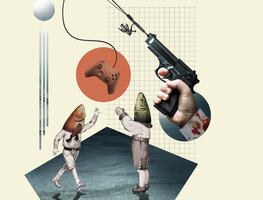Más Información

Videojuegos, el nuevo gancho del crimen para captar menores; los atraen con promesas de dinero y poder

“Vamos a dar apoyo a los pequeños agricultores por sequía en Sonora”; Claudia Sheinbaum instruye a Berdegué

Derrota de México en disputa por maíz transgénico contra EU; estos son los argumentos de Sheinbaum y AMLO para prohibirlo
Also known as “ The Go-Go Photographer ,” Fernando Escárcega likes music and dance from the 1960s, he is also the creator of a photo essay on the subject of Mexico City’s religious temples that took damage during the earthquake of September 19, 2017 .
“My photographic essay seeks to portray the social and human side of it all, and how the true actors in the restoration of these buildings were local citizens, priests, and the people of the community with help from anthropologists, sociologists, Mexico’s National Institute of Anthropology and History (INAH), architects, and restaurateurs ,” he explained.
The photographer, born in Nezahualcóyotl , a municipality in the State of Mexico , has become known due to his unique creative vision that combines urban aspects with contemporary fashion. He was invited by INAH to conduct a project called “Latidos de la Tierra” (Heartbeats of the Earth) . Seven municipalities of the State of Mexico , where most historic buildings and monuments were damaged during the earthquake 12 months ago will be part of the tour. Each of these places has been captured by the artist’s lens.
The project lasted three days and the visual artist was not paid for his work and only received resources for transport to all places where the photo shoots were conducted. “It gave me an opportunity to empower locals after their bad experiences. They were more willing to get back up than to suffer. In the end, they were the stars of the show, not the buildings,” concluded Escárcega.
dm







